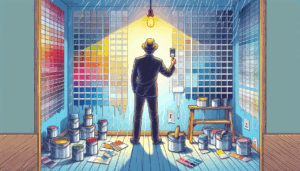On November 23, 2022, the lives of Pablo Álvarez and Sara García changed forever. The Airbus engineer and cancer researcher at the National Center for Oncological Research (CNIO) were introduced in Paris as two of the 17 new astronauts of the European Space Agency (ESA). Until now, the only Spanish selected for the European astronaut corps was Pedro Duque, 30 years ago. Since then, there have only been two other calls, one in 1998 and another in 2008.
To become an astronaut, you cannot study a specific career. The rigorous selection process was traditionally oriented towards pilots and engineers. However, in this latest call, the ESA has opened the process to other disciplines, and for the first time, has included an astronaut with a disability.
Pablo and Sara, the new Spanish astronauts, are from León, but they did not know each other. They are 17 days apart, although they were not born in the same year: in 1988 and 1989, respectively. There is affection and camaraderie between them. They are among the few chosen in a process with over 22,000 applicants.
“How did you become interested in being astronauts?”
Pablo Álvarez: It’s a dream that every kid has at some point, but then you follow your path, your training to become an engineer or scientist, and you don’t really consider it as a real option, not even when you apply for it. When you see the offer, you say, well, let’s give it our all here, because this opportunity only comes once.
Sara García: Yes, my case was very similar. I fantasized about it as a child, but never took it seriously. After seeing the offer and analyzing it from an adult and mature perspective, I thought, well, the job interests me, and I have a profile that fits quite well with what they are looking for. Let’s give it a try, the chances are very low, but the journey can be interesting.
“How did you find out that you had been selected?”
P.A .: With a call from the Director General of the European Space Agency [Josef Aschbacher], who invited us to Paris and we shared the news between us, because we had made a small internal pact that we would do so if one of us made it to the end.
“And how do you react to something like that? Who do you tell first?”
S.G.: We told each other. We made a small internal pact, between the two of us, that we would tell each other, so that if one of us didn’t receive the call, they wouldn’t have the agony of wondering if we had made it to the end or not.
“Did you already know each other from the selection process? Were there more Spaniards?”
S.G.: Yes. Around 1,300-1,500 Spaniards applied, of which about 80 passed the initial screening and were invited to the first phase in Hamburg (Germany). Among them, there are people with incredible profiles, and we created a WhatsApp group that is still very active. In fact, even as the selection process progressed and fewer people were chosen, it is more active than ever and interesting collaborations have emerged that may become professionalized.
“What will happen to your jobs?”
P.A.: I will leave mine [at Airbus] before starting training, on April 1. After the announcement, I went to work and it has been crazy, but well, I hope it’s just the initial excitement. They took it very well.
S.G.: I will juggle both things. For now, I will continue with my research at the CNIO and with my students. I am leading a project to discover new drugs. I will continue with that, and at the same time, carry out the duties that I have to do for the ESA: maintaining my medical certification, training, plus any consultancy services – which will be occasional – or tasks or missions that they may assign me at a certain time. If an opportunity for a flight arises, then I would have to take a leave of absence or temporarily leave it to receive training and of course, execute the mission. But until then, I can juggle both jobs.
Pablo Álvarez will leave his job as an engineer at Airbus on April 1, when he begins his training at the European Space Agency, and Sara García will juggle the tasks assigned to her by the ESA with her current research at the CNIO.
“How are you handling the media pressure?”
S.G.: Fine. The interviews have been very kind, and the people we meet are very excited that there are two Spanish astronauts after 30 years. Seeing those smiles, that excitement, and that kindness more than make up for everything. We are two somewhat private individuals who don’t expose ourselves much, but at least for me, it’s been beautiful. They don’t stop me on the street yet. If you ask us the same question in a couple of weeks, we may answer differently.
P.A.: In the factory, in Getafe, with all that aerospace environment, they did stop me a bit. But, well, they all came with a big smile and very cautious.
“What kind of scientific experiments are scheduled?”
S.G.: A kind of roadmap has been established on different scientific areas that they want to delve into until the International Space Station ceases to be operational, and if I’m not mistaken, there are about ten lines of action from now until 2030 that cover topics from health and biomedicine to materials science. It’s a document of over 100 pages. The number of scientific projects that will be developed there is impressive.
Referrer: MiMub in Spanish









